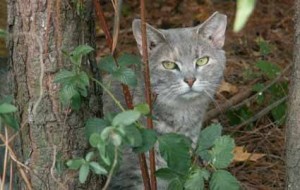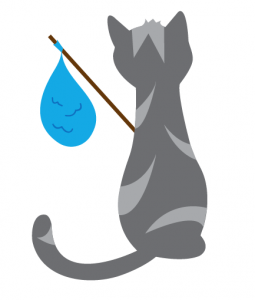 Junior Audrey Maxwell received a call from a friend this year saying she found four kittens outside of her on-campus apartment.
Junior Audrey Maxwell received a call from a friend this year saying she found four kittens outside of her on-campus apartment.
Not wanting to break campus policy prohibiting pets, she left the kittens outside.
Two froze to death overnight.
“I drove and picked up the remaining kittens and had to rush them to the vet,” Maxwell said. “They were very sick. I bottle fed them and gave them medicine for weeks until I adopted them out.”
Two weeks later, there were more kittens found on campus, Maxwell said.
This is when she decided something had to be done.
Maxwell is asking the university to adopt a Trap, Neuter and Return (TNR) policy through a change.org petition called “Trap, Neuter, Return USI Feral Cat Population.”
The petition gained 422 signatures as of Tuesday.
TNR is a method of trapping feral cats, spaying or neutering them and returning them to the environment from which they were collected.
Maxwell believes TNR would keep the stray cat population under control by stopping reproduction.
“I was just so frustrated with the way these cats were living,” she said.
The physical plant shot down her TNR proposal describing it as “inhumane,” she said.
“At first, I was upset. Then I went home and looked at my kitten that was found on the side of the road,” she said. “That was when I got angry. I decided I would do anything in my power to petition the university to change their minds.”
She said research led her to the TNR method, and many universities like Stanford, Texas A&M and DePauw do it.
She plans to meet with Associate Provost for Student Affairs Marcia Kiessling and Housing and Residence Life Director Laurie Berry next week.
Stephen Helfrich, facility operations and planning director, is in charge of the feral cat issue and said he likely won’t consider a TNR policy.
He said while the university doesn’t have a formal policy, it has carried the same practice for 15 years.
About twice a year, grounds workers set up box traps to catch and send the cats to animal control.
The most the university has ever caught at once was 29, he said.
“I’m not convinced (TNR) is the best thing for the cats,” he said. “When the cats are turned into the wild, they can catch disease, get and spread rabies and they just have to fend more for themselves in the weather like this. It’s hard on them.”
He said the cats that are caught and sent to animal control are usually adopted, so it’s a better situation for them than TNR.
He also said that putting feral cats back into the wild can harm the native wildlife like squirrels, birds and rabbits.
“That’s one reason we trap them when we see it get out of control,” he said.
To return cats to the USI environment after fixing them wouldn’t help much, he said, because there’s an ongoing issue with students letting their own cats loose every year.
“To what extent do you allow the cat population to grow? If we did TNR, potentially, we could see hundreds of cats here in a few years,” he said.
Executive Director of the Vanderburgh Humane Society (VHS) Kendall Paul said TNR is a method the VHS uses and the ASPCA endorses to reduce the number of feral cats.
“The idea behind TNR is that if you can catch these cats and fix them and then return them to where they’ve been living, then those cats don’t add to the problem,” she said. “Eventually that population is going to die out… and then you won’t have all those cats living outdoors.”
She said it’s a better alternative than letting the population get out of control and then trapping the cats and sending them to animal control, where they’ll likely get euthanized.
She said anyone can bring in an animal to get fixed, and the VHS also offers a program for feral cats.
If a cat comes in a trap, the VHS will fix it for a reduced price.
She said a cat with a small snip on the top of its ear shouldn’t be brought in because that’s a universal symbol it’s already been spayed or neutered.
She encourages those who have a cat but can’t keep it anymore to bring it to the VHS instead of dumping it outside.
“Throwing it outside is not the answer,” she said. “These are domestic pets – animals that need to be with their family indoors.”
Film lecturer Eric Braysmith signed the petition. He and his wife, Hillary, have picked up a few of the strays from campus, including one they’ve had for 15 years named Calypso.
They’ve also picked up two other cats from campus in the past, he said.
“My classes go until 10 at night, so when a stray cat comes up to you, and it’s cold and it’s stuck and there’s no one else around, you can’t not do something,” he said.
He said he signed the petition to support TNR because it’s apparent the problem is getting out of control.
“You have to do something, and it’s certainly more humane than trapping them and putting them to sleep,” he said. “The kill rate at the pound is pretty high, and nobody is going to adopt a feral cat. They’re mean, nasty and just don’t like people, so it’s going to be put to sleep.”
To sign the petition, visit: http://chn.ge/1eS6h56


